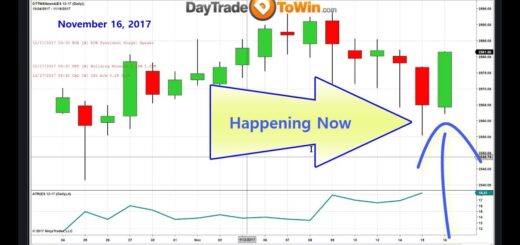Market Prediction: Early January 2021 Sell-Off Expected
In the day trading industry, predictions are a dime a million. So many people make predictions all the time and they readily point out predictions that come true. That is not so much the problem. The problem is that when many predictions are made, there are some that will likely be correct and some that are not. If you do not point out those that are incorrect, then you do not have a good track record. Wouldn’t you say that’s true?
John Paul, founder of DayTradeToWin.com, makes relatively few predictions about what he expects to occur in the markets. Just about every year, he releases a January Effect video that discusses what the overall trend of the E-mini S&P 500 will be for the year. You can go back and look for yourself – they January Effect has been an accurate predictor. Again in 2020, we see the year closing at a much higher value than it opened, which is exactly what the January Effect predicted. And this is occurring despite the crash that happened earlier in the year and all of the controversies and huge impacts coronavirus and the like have had in 2020.
So, when John Paul comes out and makes a prediction about what to expect in 2021, like he has done recently, it may be worth your while to listen. This is not common. Basically, he says that you should be on the lookout for a big sell-off in early January 2021. He does not say where he is getting his information from. Whether or not he has inside connections or it is his years of analysis and trading, that is left up for your speculation. Rather, his prediction and subsequent videos focus on what YOU can do as a trader. He wants you to make the most out of this activity – that is, to find intraday winners during a sell-off. Watch the video to learn more.
If and when a sell-off occurs, it should be recognized as such in the headlines. After all, the Oxford dictionary defines a “sell-off” as a “sale of assets, typically at a low price, carried out in order to dispose of them rather than as normal trade.” The North American Oxford definition is, “a sale of shares, bonds, or commodities, especially one that causes a fall in price.” Indeed, there are plenty of reasons for pundits to point to and say, “Yes, here is the reason for the sell-off.” As price action traders, we do not care about pundits. We care about price action, which means identifying opportunities using our knowledge of price action patterns and software.
For instance, if the Atlas Line or Trade Scalper are in use during a sell-off, those signals in the “sell direction” (i.e. short) are seen as having greater importance. In effect, the sell-off serves to help validate those short signals. If you are serious about learning to day trade or want trading signals for the anticipated January 2021 sell-off, now is the time to take action. The DayTradeToWin.com website has multiple options, including a complete coaching program that lasts eight weeks.
If we see the Dow drop significantly, for example, we should expect the S&P, and therefore the E-mini S&P, to drop as well. The sell-off may not occur right out of the gate (i.e. right when the market opens). You’ll have to let price prove to you that a sell-off is occurring. Then at that point, look for short trades. This could be later morning or early afternoon. The news may not identify the sell-off as a sell-off right away, so it’s important to gauge the price activity for yourself. Compare with recent bearish trends and see what would be a significant change. What price level must be approached to qualify? Refer to John Paul’s market analysis.




